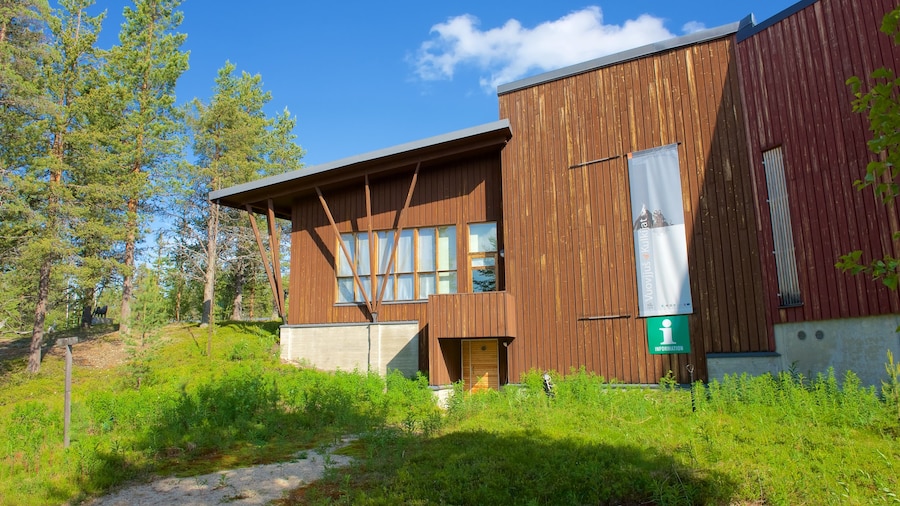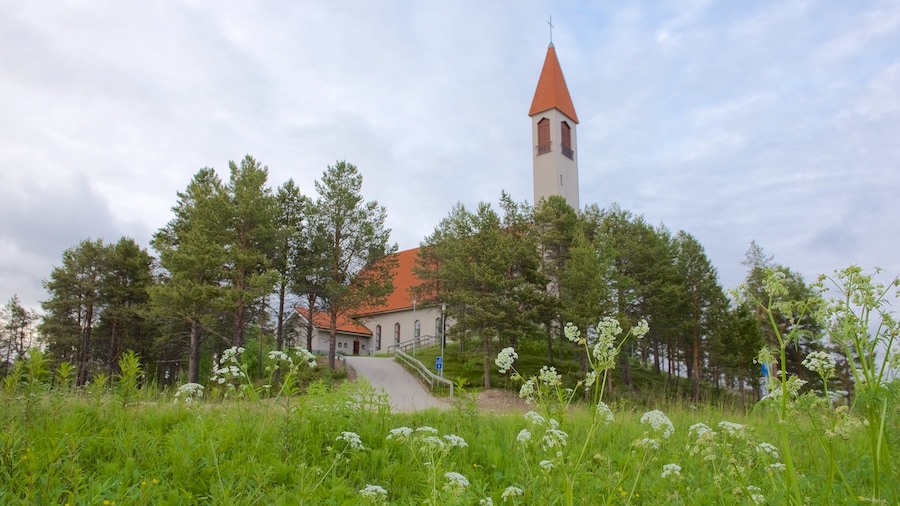The village of Kilpisjärvi, on the banks of a lake with the same name, is located at one of Finland’s farthest reaches. Travel to this northwestern extreme, near the borders of both Norway and Sweden, to experience a stunning landscape of fell peaks and hidden waterfalls. Embrace the legends and culture of Kilpisjärvi by exploring this remote location and taking part in traditional activities such as ice fishing.
Ask the locals about the legends surrounding Kilpisjärvi. Some say that the region was inhabited by giants, who were cursed by witches and formed the dramatic landscapes of the area. The stunning colors of fall are the clothes of the giants celebrating a wedding.
Learn more about the region in the Kilpisjärvi Visitor Center, which features permanent exhibits on the nature reserves in this corner of the country. Photography displays document life here, showing traditions such as reindeer husbandry.
Climb to the peak of Saana Fell, a distinctive, flat-topped hill that stands behind the village. A route to the top of the peak starts from the Kilpisjarvi Hiking Center and takes you to a height of 3,376 feet (1,029 meters).
Take a longer hike from Kilpisjärvi to the Three-Country Cairn, a yellow stone marker in the Malla Nature Reserve that denotes the meeting point of Norway, Finland and Sweden.
Join a tour into the wilderness beyond Kilpisjärvi. Long treks could take you up the peak of Halti, the highest point in Finland, or to the nearer sight of Tshahkal River Waterfall. To find other rapids and falls, book a white-water rafting expedition for thrills in the landscape.
Visit Kilpisjärvi in winter to enjoy snowmobile excursions through the wilderness. Walk safely onto Lake Kilpisjärvi for ice fishing, a relaxing way to catch your dinner. At night, watch the skies for a sighting of the legendarily beautiful aurora borealis, the northern lights.
Drive to Kilpisjärvi from the nearest airports of Kittilä Opens in a new windowor Enontekiö Opens in a new windowin Finland or land in Tromsø, Norway, then cross the border. Come in summer for hiking and biking in the surrounding nature reserves or during one of the long winters for snowshoe and skiing excursions.














